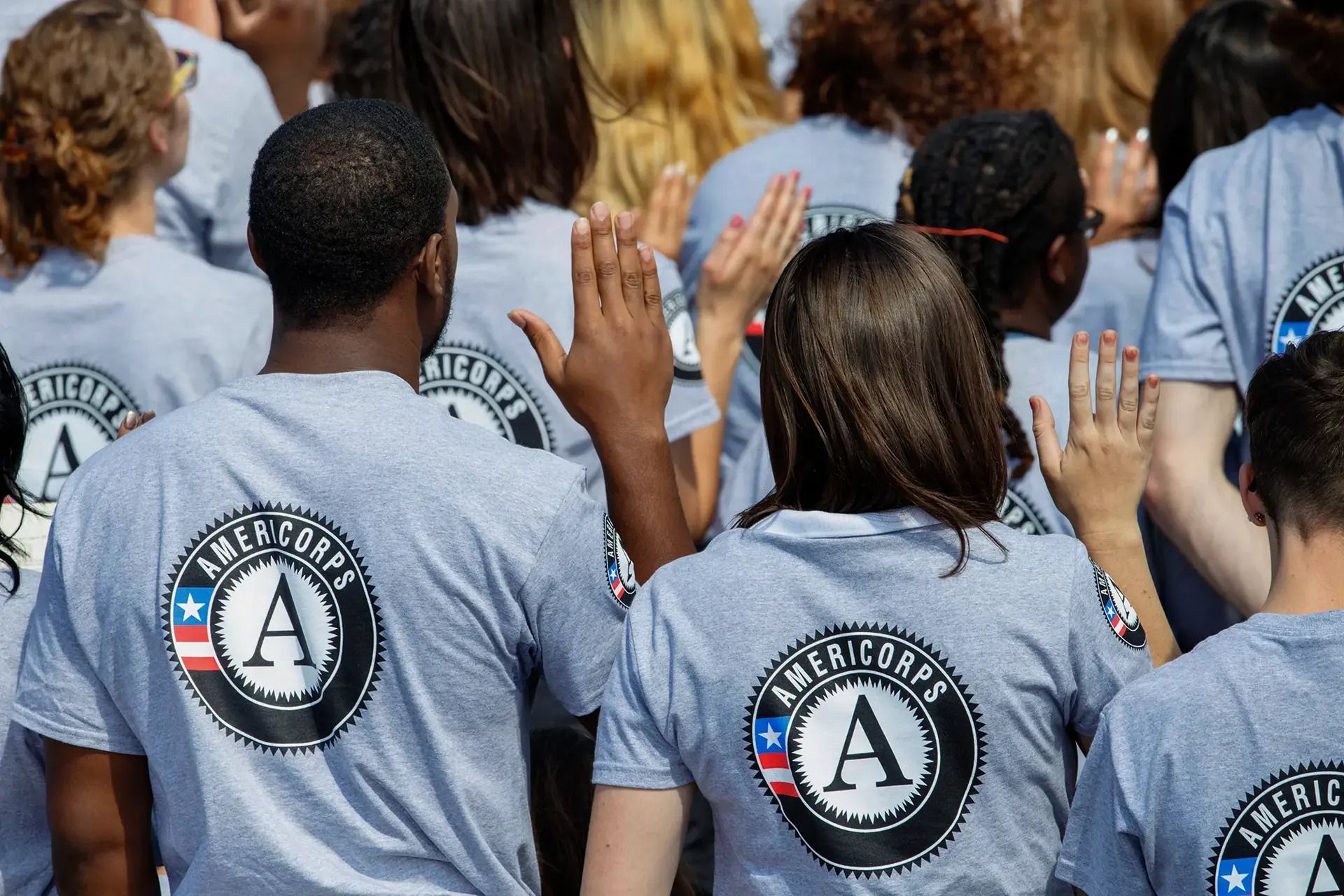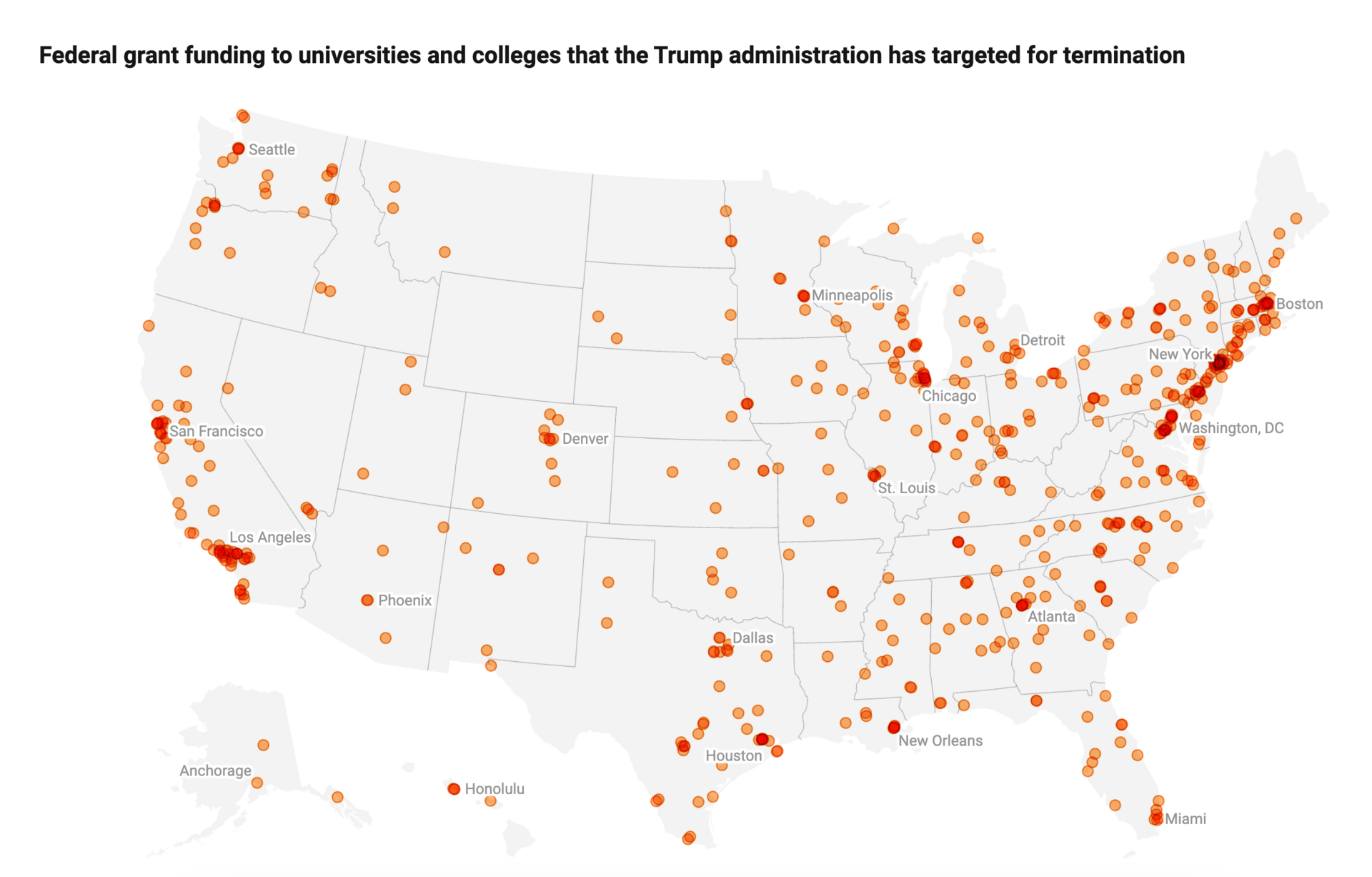- The Dispatch
- Posts
- Billions of dollars in federal funding cuts
Billions of dollars in federal funding cuts
While President Donald Trump’s disputes with ultra-selective private institutions such as Columbia University have drawn lots of attention, new data released this week show that his administration has mainly focused on targeting the funding at public universities.
Public universities have seen $2.1 billion in federal funding targeted, compared to $1.2 billion at private universities, according to new analysis from the Center for American Progress. All told, the cuts have affected 600 colleges and universities.
And, those cuts aren’t happening solely in blue states — Republican- and Democrat-governed states are largely facing similar headwinds, according to the analysis. Among the 10 states that have lost the most funding per student, four have Republican governors and six have Democratic governors.
This doesn’t solely affect institutions, either. Cuts to research affect entire economies and regions. In North Carolina, to take just one example, research employed more than 11,000 people last year and generated $38 million in tax revenue.
“It’s a loss of immediate dollars, of advancing job preparedness programs and workforce development in renewable energy,” Christine Mahoney, a public policy professor at the University of Virginia, told Allie Pitchon, our reporter at Charlottesville Tomorrow, about the impact of losing a $20 million Environmental Protection Agency grant.
And as my colleague Charlotte West, our staff reporter covering higher ed in prisons, wrote earlier this week, many of the programs that the administration has cut or is considering cutting serve people who are particularly vulnerable: low-income students, first-generation students, older adults entering the workforce, and those who need basic literacy and job training.
Many formerly incarcerated people fall into those categories, too. Kun Lyna “K” Tauch is one example. After getting out of prison, he began volunteering through California Justice Leaders, a partnership between AmeriCorps and a nonprofit that supports formerly incarcerated adults. The Trump administration slashed $400 million in AmeriCorps grant funding earlier this spring.
“I believed that federal funding was stable, and based on that assumption, I made some big decisions for myself. I rented an apartment and bought a new car,” K wrote in a first-person essay we published earlier this week.
Our Open Campus Local Network has been covering the on-the-ground impact of federal cuts, and will continue to do so. Charlotte rounded up some of this reporting in her newsletter, College Inside, earlier this week. I wanted to re-up it here.

Hundreds of new volunteers are sworn in for duty at a White House ceremony on Sept. 12, 2014. Photo: J. Scott Applewhite, AP Photo
As Adam Echelman, our workforce and community college reporter at CalMatters has reported, the future of AmeriCorps is unclear. While Congress approved money for the program's next fiscal year starting Aug. 1, the administration hasn't released those funds yet — and Trump's budget proposal eliminates AmeriCorps entirely after 2026.
While the Trump administration has touted the elimination of grants that don’t match its priorities — such as those that focus on diversity — job-training and anti-hunger programs have also come under threat:
Natalie Yahr, one of our pathways reporters at Wisconsin Watch, found that workforce and adult education programs that provide job training and literacy instruction — including programs that educate people incarcerated in prisons and jails — are losing funding. The Trump administration froze $715 million in adult education funds nationwide, threatening programs that help adults complete high school, learn English, and improve their literacy skills.
Claire Rafford, our reporter at Mirror Indy, explored the impact of eliminating the Senior Community Service Employment Program, which helps low-income adults learn job skills. In Indiana alone, the program serves 31 counties, and uncertainty over funding has already forced the state workforce development department to tell some workers not to report to their job sites while waiting for already-approved federal money.
Maddy Franklin, our reporter at Pittsburgh’s Public Source, highlighted how cuts to Medicaid and SNAP included in Trump’s new domestic policy package could increase hunger on college campuses. Nearly 2 million people in Pennsylvania use SNAP, a portion of whom are college students, Maddy wrote.
We’re a nonprofit newsroom that relies on your support.
If dedicated local reporting on higher ed matters to you, donate to Open Campus today.
Keep in touch
We’re a nonprofit newsroom that relies on the support of readers like you. Donate today.
Interested in reaching readers who care about higher education in communities across the country? Get in touch or request our media kit.
Please share. Forward this newsletter to colleagues, family, and friends who might be interested. They can sign up for their own copy here.
Run a newsroom and want to improve your coverage of higher ed? Let’s talk.
Got a story tip or a question? Please send it along.
What did you think of today's issue? |
